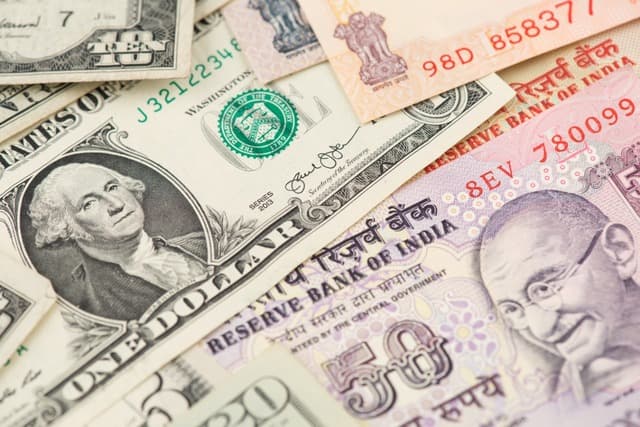Geopolitical tensions in West Asia, along with consistent U.S. Dollar purchases by foreign portfolio investors and oil marketing companies, have driven India’s currency to a new all-time low.
On June 20, the Indian rupee dropped to a record low of 83.62 against the U.S. Dollar, pressured by strong demand from local importers and broader strength in the U.S. Dollar.
Indian rupee had closed at 83.4550 in the previous trading session.

The dollar index gained strength against most Asian currencies, with the Chinese yuan also hitting its weakest level since November 2023.
The U.S. dollar’s rise followed the Swiss National Bank’s interest rate cut, highlighting the divergence in monetary policies among global central banks as the Federal Reserve delays easing its policy.
Long-term prospects bode well for Indian Rupee
Nonetheless, significant inflows into Indian equities and bond markets could strengthen the INR soon. Additionally, speculation that the US Federal Reserve might cut interest rates twice in 2024, starting in September, could weaken the U.S. Dollar and create challenges for the currency pair.
Key US economic data, including weekly Initial Jobless Claims, Building Permits, Housing Starts, and the Philly Fed Manufacturing Index, will be released on June 20 and may further damage the Dollar’s performance.
Inclusion in multiple market indexes will bolster the IND gains
On June 28, JPMorgan Chase (NYSE: JPM) plans to include Indian government debt in its largest emerging-market bond index. Goldman Sachs predicts this move could boost global investment in Indian debt by as much as $40 billion as financial firms adjust their portfolios accordingly.
Starting in January, Bloomberg Index Services Ltd. will include India’s bonds in its offerings. Britain’s FTSE Russell is also considering adding India to its fixed-income indexes. Despite some initial challenges, the market feedback has been largely positive, with most index clients ready to trade.
This index inclusion news has sparked significant interest from foreign investors in a country that was previously cautious about foreign capital.








